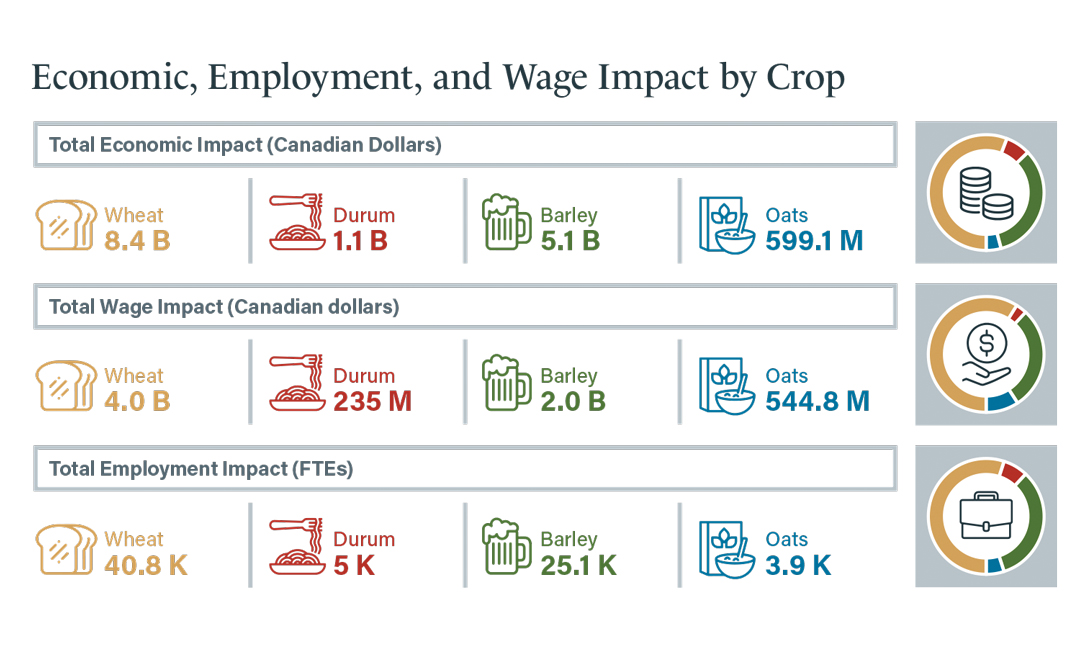SHOWTIME FOR SHOCHU?
JAPANESE LIQUOR TAKES FIRST STEPS INTO NEW MARKETS
BY SCOTT ROLLANS
Look carefully. Nestled among the whiskies in Edmonton’s Chateau Louis Liquor Store, you might spot a frosted white bottle with Japanese lettering, labelled “iichiko.” Peer at the fine print and you can pick out the description, “The Mugi Shochu.”
Confused? Thankfully, store manager Adam Koziak is eager to answer your questions. Koziak developed a taste for shochu (a Japanese distilled spirit) during trips to New York. He marvelled at how well shochu went with Japanese and Korean food, and decided to introduce it to the Edmonton market.
Koziak settled on iichiko as his store’s first brand.
“I’ve tried probably 10 or 12 different ones over the years, and this is the one that we typically go back to,” he said. “It’s smooth enough that you can drink it straight. Throw it on the rocks, and squeeze a lemon or lime into it, and you’re ready to go.
“So,” he said with a laugh, “it’s in my store mostly for myself!”
Although it’s a distilled spirit, shochu typically contains 25 per cent alcohol—more than wine but less than most hard liquor.
Although iichiko is distilled from malted barley (in Japanese, mugi means barley), shochu can also be made with sweet potatoes, buckwheat, rice or blends of the above.
But, for now, let’s stick with mugi shochu.
Sanwa Shurui, the distillery behind iichiko, describes its product as “Japan’s best-selling genuine shochu.”
Shochu has been produced in Japan for centuries, but it is currently enjoying an unprecedented surge in popularity (surpassing even sake in the domestic market). The trend has even started to spill over to North America, with shochu bars popping up in New York City.
What’s the Canadian connection? Significant work has been done to identify and develop a Canadian barley variety for shochu, and to explore the potential for developing a North American shochu market. The work is ongoing, says Alberta Barley Research Manager Garson Law, but interest in shochu is increasing.
“Canmore has been identified as an existing variety that has great potential for shochu,” explained Law. “Although, it is currently undergoing seed increases to build up enough volume, which takes a couple of years.”
While building the Canadian connection, Japanese shochu from companies like Sanwa Shurui is slowly building profile in Canada. Davin de Kergommeaux, an Ontario independent whisky commentator, recently sampled several different varieties of iichiko shochu.
“This is really good stuff,” he enthused. “I really enjoyed it. My wife had got me a nice plate of sushi, so I did some pairings.
“The taste is very familiar to me, but I’m not sure if I’ve tried it before. I recall shochu as being much more alcoholic and a lot less flavourful.”
In any case, he’s a fan now.
“They sent me three bottles. I’m looking at them now, and I think I did quite a bit of tasting last night. Normally I keep an extra glass on the table, and I use that for spitting into—but I didn’t do any spitting at all last night.”
Down the road in Bloomfield, ON, craft distiller Sophia Pantazi has already tried her hand at a made-in-Canada shochu. Her business, 66 Gilead Distillery, currently produces small batches of a barley-rice shochu called White Dragon.
Like Koziak and de Kergommeaux, Pantazi loves the way shochu pairs with Asian cuisine.
“Wine doesn’t really go with Korean or Japanese food, and beer is very filling. So, sake or shochu are your best options. Sake is fine, but it tends to be very sweet. Shochus have a lighter, cleaner taste, and I feel it goes better with the food.”
When Pantazi looked for shochu at her local outlet, run by the Liquor Control Board of Ontario (LCBO), the closest substitute she could find was soju, a cheaper Korean spirit that, while similar, doesn’t match shochu’s flavour or complexity, in her opinion.
“I thought, well, that’s a real shame. So, the best way to get around that is to make it here.”
Unfortunately, the LCBO still doesn’t carry shochu, despite Pantazi’s efforts to get White Dragon into its stores.
“Their opinion is that there’s not a market for high-end shochu. But I disagree, because it sells so well at our store. The people who come and discover it, love it.”
Outside Alberta, Canada’s retail liquor market presents a challenging landscape for innovative or niche products, explained Jan Westcott, president and CEO of Spirits Canada. Most provincial liquor boards have a “one-for-one” policy—if they add one product to their catalogues, they have to remove a product to make room. As a result, they generally require a great deal of convincing.
“As an importer or agent, what are you going to do in my marketplace to make sure that the sales of your product actually take off? Are you going to advertise? Are you going to put people in the stores to do tastings? How much money are you going to spend? What’s your marketing plan? How are you going to get consumers to come into my stores and pick this up off the shelf?”
That said, Westcott sees some positive signs for the growth of shochu in Canada. Even though shochu accounts for a mere 700 cases a year in a market of 16 million cases, those 700 cases represent 14 or 15 different products.
“That’s pretty amazing,” observed Westcott. “It speaks to the fact that, in Japan particularly, the shochu business is very robust.”
Angela Lum, investment attraction manager for southern Alberta with Alberta Agriculture and Rural Development (AARD), said her department recognizes the potential for shochu development in North America. As our population ages, Lum suggested, consumers may look for lower-carb, lower-alcohol drinks.
“There is also an increasing interest in Japanese culture and authentic dining experiences here in North America,” she added.
Both Law and Lum see potential for a shochu company to set up shop in Alberta. In Japan, Canada enjoys a reputation as a land of blue skies, endless rolling plains and snow-capped mountains. A Japanese distiller, using premium Alberta barley and clean water from pristine Rocky Mountain glaciers, could develop an exceptional product.
“Alberta is looking for value-added opportunities to bring to its growers,” enthused Lum. “Companies would be close to raw materials and efficient logistics to a growing market in the Pacific Northwest.”
If you walk into a liquor store a decade or two from now, you might very well find an entire shochu section—with a made-in-Alberta option on the top shelf.







Comments